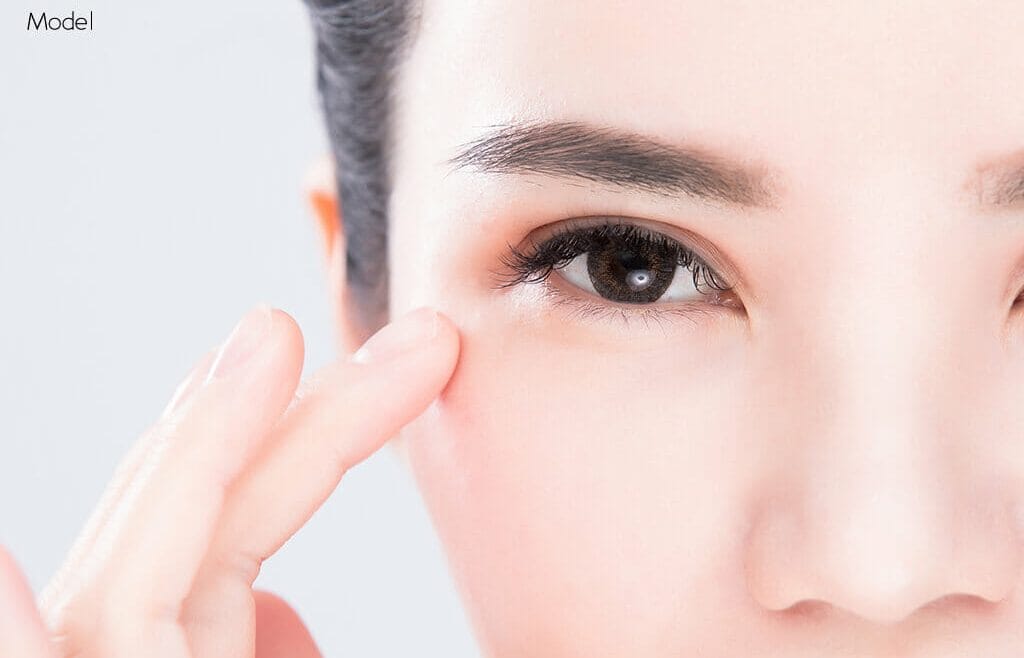Asian Blepharoplasty
People with loose, sagging eyelids are sometimes bothered by their appearance. In some cases, overhanging eyelid skin can cause an obstructed field of vision. Luckily, patients can undergo blepharoplasty, often referred to as eyelid surgery or an eye lift, to smooth the eyelids and remove excess skin. The results from blepharoplasty include widened, more alert, youthful eyes. Some patients do not have a prominent upper eyelid crease, so blepharoplasty can complete a double eyelid surgery to create that crease. For patients seeking to maintain their ethnic identity, specifically Asian patients desiring wider, fuller eyes while keeping their natural almond shape, skilled surgeon Dr. Tran can improve the appearance of Asian eyes while maintaining the desired eye shape.
Before & After Photos Available Upon Consultation
Candidates for Blepharoplasty
Healthy patients without medical conditions that will impair healing, and those who also identify with eyelid concerns, may be candidates for eyelid surgery. Dr. Tran will thoroughly examine your eye structure and discuss your desired outcome during your consultation to determine a surgical plan to achieve your goals.
Blepharoplasty Procedure
Anesthesia is administered, whether general or local with intravenous sedation, and after it takes effect, incisions are made. Many patients choose to combine eyelid surgery with other procedures, such as a facelift, to also improve sagging skin on the jawline and wrinkles on the cheeks and neck.
Upper Eyelid
This technique usually involves an incision made in the eyelid crease above the eye to conceal any scarring. Excess skin and fat are extracted, and the skin and muscles are adjusted. In some cases, fat is simply repositioned, and muscles are tightened.
Lower Eyelid
This method corrects lower eyelid issues, such as bagging eyelids, by making incisions on the outer edge of the lower eyelids, directly beneath the eyelashes. Fat is removed or adjusted to create a smooth contour beneath the eyelids. Any excess, sagging skin can be removed, and muscles can be tightened as needed.
Transconjunctival
Incisions for this technique are made on the inside of the lower eyelids to allow access to the tissue and fat under the eyelids for removal. Dr. Tran may combine incision locations depending on your needs.
Incision Closure
Eyelid incisions are closed with surgical sutures or skin glue. Depending on the particular sutures used, they will either dissolve on their own or will be removed within one week.
Recovery
After your procedure, your eyes may be bandaged, and you may be given an eye lubricant to ease discomfort. Many patients experience blurry vision and dry eyes for the first day. You can expect swelling, bruising, and tightness in the eye region for one to two weeks following your surgery. Cold compresses may be used to relieve discomfort. Sleeping with your head elevated will alleviate some of the symptoms.
For the first three weeks, your eyes may get tired easily, so resting is essential to your recovery. Using eye protection from the sun and wind will help you recover quicker, especially wearing dark sunglasses and applying sunscreen when your surgeon has cleared you to do so. Lifting and bending over should be avoided for four weeks. You will be provided with specific post-operative instructions about how to care for your eyes and incisions as well as directions for your prescription medications. Patients typically feel comfortable presenting themselves in public one to two weeks after their procedure.
Results
Blepharoplasty results can take a few weeks to become visible as swelling and bruising dissipate, gradually revealing smoother, more-defined eyelids for an overall rejuvenated appearance that is long-lasting.


